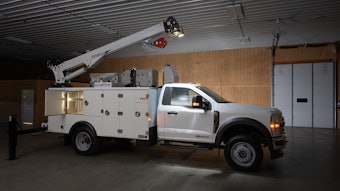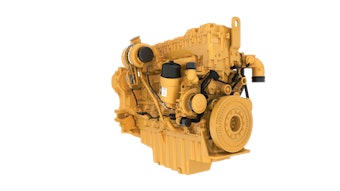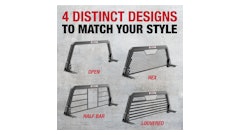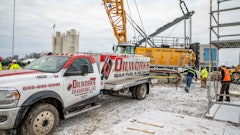
In July, the National Highway Traffic Safety Administration (NHTSA) issued a braking standard that effectively shortens the majority of large truck stopping distances by 30%. The rule applies only to new truck tractors; it does not impact single-unit trucks, trailers or buses.
The amended standard requires heavy truck tractors to stop in not more than 250 ft. (vs. the previous standard of 355 ft.) when loaded to their Gross Vehicle Weight Rating (GVWR) and tested at 60 mph. For a small number of very heavy severe-service tractors, the stopping distance requirement is 310 ft., under the same conditions. In addition, all heavy truck tractors must stop within 235 ft. when loaded to their lightly loaded vehicle weight.
The standard will be implemented in phases. Three-axle tractors with a GVWR of 59,600 lbs. or less must meet the reduced stopping distance requirements by August 1, 2011. All other tractors must be in compliance by August 1, 2013. Voluntary early compliance is also permitted.
Solutions available
The NHTSA claims there are simple and effective solutions available to meet the new requirements, including enhanced drum brakes, air disc brakes or hybrid disc/drum systems. Such systems are already in use on a number of vehicles in the current commercial fleet.
One example is the ArvinMeritor line of Q Plus drum brakes. "ArvinMeritor has been on a reduced stopping distance program for over three years in anticipation of the new regulations," says Mike Pennington. "As a result, the Q Plus product will meet the new requirement with an additional 10% margin."
"It's a real benefit that truck operators are able to meet their stopping needs and the new federal stopping distance requirements without having to make significant changes to their drum brake specifications or service practices," adds Joe Plomin, vice president, truck, ArvinMeritor. "We have the technology and products and we are ready to support our customers."
Bendix brand foundation brakes also meet the new NHTSA mandate. "Bendix foundation brakes offer the fleets and the OEMs solutions in full drum brake, full disc brake, and combinations of air drum and disc brakes, based on their requirements, says Douglas King, marketing manager, Bendix Spicer Foundation Brake. "The company's drum brake solutions won't require extensive modification in fleet operations, service or training."
He points out, "Years prior to it becoming final, developing a range of solutions and technologies to address the stopping distance regulation has been one of our engineering priorities. Many OEMs require foundation brake solutions capable of exceeding the mandated requirements, thus allowing all of their vehicle configurations to go beyond the 30% directive for shorter, straighter stopping."
In some cases, but not all, larger drum brakes may be required. "ArvinMeritor will continue to offer an array of brake sizes, including 15-in. steer axle packages," says Pennington. "This is particularly important for weight-sensitive customers. However, transitioning to larger brakes will provide some advantages, including increased lining volume to drive longer service intervals, lower operating temperatures, reduced fade and improved performance."
All wheel end air disc brakes are also an option. "You can generally generate more torque output with an air disc brake," says Aaron Schwass, foundation brakes product line director, Bendix Spicer Foundation Brake. "You can achieve the shortest pure stops with an all-wheel air disc brake solution."
According to King, air disc brakes can provide twice the life of drum brakes in the same vocation and duty cycle. In the long term, the air disc brake may have the better value proposition for most fleets.
Impact on OEMs
From the truck manufacturer's standpoint, few changes in current braking technology are anticipated.
"We are confident we can meet the new standards with relatively minor modifications of existing technology," says John Walsh, Mack Trucks. "We already offer disc brakes capable of meeting the standards, but our testing has not shown the need for them for the initial phase of the new regulations in 2011. Some components might have to be changed on our drum brake systems to handle the additional torque that will be applied to the axle and supporting systems."
The tractor-trailer balance also had to be considered when addressing the shorter stopping distances. "ArvinMeritor recognized the need for high-performance brake solutions on new tractors to work with existing trailers," says Pennington. "Our solutions have been developed to maintain tractor-trailer compatibility with existing trailer fleets. The tractor will incur approximately 5% more of the braking workload, while the trailer will experience a proportionate reduction in workload."
Roll stability products should be compatible with the new braking standards, as well. "The new regulation will require only minor changes to Mack's Roll Stability Advantage," says Walsh.
Required changes increase, however, with the severity of the vehicle application. "Severe-service tractors are expected to be a greater challenge, which is the grounds for the longer implementation period and for the longer stopping distances," says Walsh. "The NHTSA is required to demonstrate technical feasibility for their new rules, so it is not impossible, just challenging."
While you may see the use of more air disc brakes on some severe-service trucks, it is technology that exists today. "In that market segment, we have already identified some optional products for our air disc brakes, such as rotor shields, pad shields and severe-service rotors," Schwass says. "In some of those applications, it is not just taken off the shelf."
Of course, the additional cost of air disc brakes means each fleet must consider if this solution makes sense. The technology may not pay for itself if you turn vehicles over every three years and are set up to run with the lowest acquisition cost. "The air disc brake doesn't fit into that cost equation," says Schwass.
Yet, the higher performance of air disc brakes will likely drive increased use. "In moving to disc brakes, clearly the operators have a different feel in the braking performance of the vehicle," Schwass comments. "Over time, you will see the cost of the air brake solution drop as the volume increases."
"I think we will see air disc brakes standard in certain wheel positions in certain vocations," King adds.
Justifiable expense
"There will be an incremental cost increase for enhanced drum brakes that meet the new regulations," Pennington acknowledges. "In studying the implications of the new regulations, the NHTSA estimates the incremental cost for drum brakes on a typical three-axle tractor would be $211, whereas the incremental costs to convert to disc brakes at all wheel positions would be $1,475."
The NHTSA believes the added cost is justified. It estimates the new braking requirement will save 227 lives annually, prevent 300 serious injuries and reduce property damage costs by over $169 million annually.
"This rule will result in a safer fleet," says Schwass, "and make it safer for everybody involved."

























